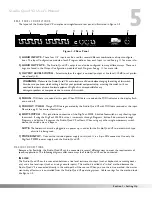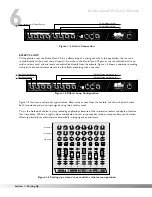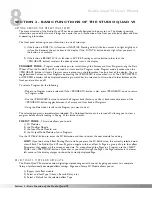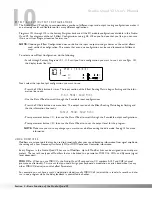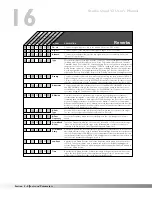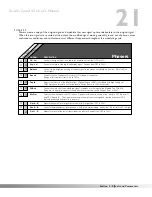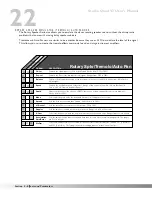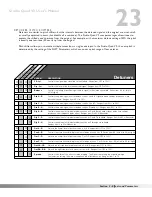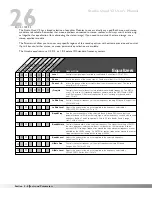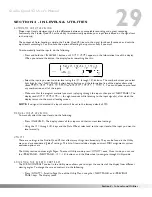
18
CHORUS AND FLANGE
Both choruses and flangers use a Low Frequency Oscillator (LFO) to produce their rich, swirling effects. When you
change the speed and depth Parameters of modulation effects, you're actually controlling the frequency and ampli-
tude of the LFO. These settings determine the rate and intensity of the modulation effect.
In general, here's how choruses and flangers work: after entering the Module, the source signal is split into two
paths. One is allowed to pass through the Module unaltered, while the other is delayed and pitch modulated. The
modified sound is then sent to the output, along with the original. In Fig. 3-3 below, a sine wave is used to modulate
the pitch of the split sound source.
Figure 3-3 Modulation Example
The Dual Chorus creates two different pitch “voices”, while the Octal Chorus creates eight voices for extremely
full, rich sounds.
The only difference between choruses and flangers is that flangers use less delay and have a feedback Parameter that
sends a portion of the effected signal back to the input of the Module. When the effected signal reaches the input, it
is sent through the Module again, building thickness and depth. If you increase the feedback enough, the source
begins to lose its own original pitch to the dramatic pitch modulation of the feedback loop.
LFO Waveforms:
There are four LFO waveforms available for Choruses, Flangers, Phasers, Tremolos, Auto
Panners, and five for Modifier LFOs. They include SINe, TRIangle, SPecial-1, SPecial-2, and SPecial-3. Figure 3-4
shows of what these waveforms look like.
Figure 3-4 LFO Types
FREQUENCY (SPEED)
AMPLITUDE (DEPTH)
SINE LFO
FREQUENCY (SPEED)
AMPLITUDE (DEPTH)
TRIANGLE LFO
FREQUENCY (SPEED)
AMPLITUDE (DEPTH)
SP1 LFO
FREQUENCY (SPEED)
AMPLITUDE (DEPTH)
SP2 LFO
FREQUENCY (SPEED)
AMPLITUDE (DEPTH)
SP3 LFO
(Modifiers only)
PITCH
T I M E
-5 cents
0
5 cents
10
10
1 sec
2 sec
3 sec
Modulated Sound
Original Sound
Section 3 - Effects and Parameters
Studio Quad V2 User's Manual


